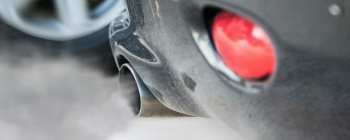
Debunks DPF Myths
Since its introduction in 2001, the Diesel Particulate Filter (DPF) has been the subject of controversy – Doug Bentley, head of product development at Klarius Products Ltd explores the issues surrounding the confusion on DPFs.
DPFs are a filter device, constructed of a metal casing containing an internal ceramic monolith.
The regeneration cycle is a controlled burn-off that happens inside the DPF where soot is burnt through to form less harmful gas and fine ash which remains in the DPF. Regeneration tends to occur when the DPF reaches a high temperature for a prolonged period, such as motorway driving.
The MOT test includes a DPF check for diesel vehicles if the component was fitted from new – so why are some motorists and garages illegally removing DPFs from vehicles?
Doug Bentley said: “Many owners of diesel vehicles who only make short journeys will notice that the DPF fills quickly and does not regenerate. The exhaust system cannot reach a suitable temperature on these journeys, so the soot is given no opportunity to reduce, and so clogs the monolith. Some motorists will assume that it’s the component that is faulty and may opt to remove the DPF entirely as clogging continually reoccurs. DPF removal ‘black market’
“This is illegal and will actually start to damage the car as well as adding highly carcinogenic pollutants into the atmosphere. The situation can be avoided by simply taking the vehicle on a long journey once a month, providing an opportunity for the DPF to burn off the excess soot.”
Doug believes this knowledge is not passed on to diesel owners, which has helped to create what he calls a “black market” specialising in DPF removals. It is now a legal requirement for a DPF to be present on a road going vehicle if it was fitted from new.
The absence of a DPF on an applicable diesel vehicle will result in an automatic MOT test failure. Doug warns motorists that removal can lead to costly repairs for the owner to make the vehicle roadworthy again.
Service item
“DPFs used correctly can still be a service item; during normal use for some vehicles it will eventually become full of ash. The performance of the vehicle will also noticeably deteriorate as the exhaust gas stream is hindered. This will usually result in a full DPF replacement.
When and if this happens depends on the rate at which a DPF becomes blocked. Small cars with ‘dirty’ engines will last 60-80,000 miles before a replacement is required. Vehicles mostly used on the motorway may last 150,000 miles plus, or, the lifetime of the vehicle.”
Poor quality DPF replacements
Klarius type-approves aftermarket DPFs, an EU standard for emissions and product quality, which means Klarius DPFs are comparable to the original in terms of performance.
Doug said: “Klarius has seen independent test results that clearly show some suppliers are not so stringent. The main area of compromise is the size of the internal ceramic monolith, which in some inferior replacements, can be half the size it should be in order to match the OE equivalent. This of course means the DPF clogs much quicker when installed, causing an increased likelihood of failure and providing another excuse for complete removal. Some DPFs are also designed with a precious metal coating on the ceramic monolith, which acts as a catalytic converter for further reducing emissions, this is often very light, or absent on cheap replacements.”
Garage Wire 4.07.17


 Click here to open the navigation menu
Click here to open the navigation menu